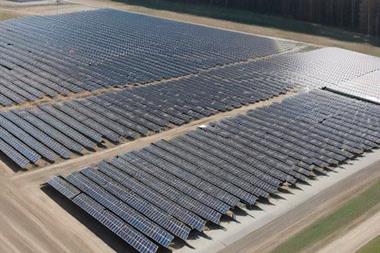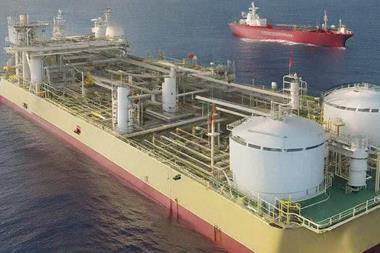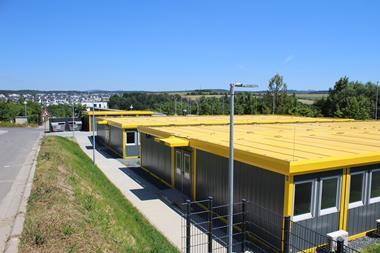Pension funds in the process of investing in infrastructure need to be mindful of the quality and depth of information on offer, warns Georg Inderst
The case for infrastructure investment as a new asset class is being presented by more and more providers and consultants. For many pension fund directors, infrastructure feels more "physical" and "real" than a lot of other alternative products presented these days, where they find it difficult to detect the underlying value.
However, some investors are unconvinced that infrastructure is necessarily an asset class distinct from others. After all, pension funds have already invested in shares or bonds of utility companies or transport network companies (for example, motorways, tunnels, ports) for many years. Similarly, infrastructure-related property might well be included in their real estate portfolios and funds.
These days, infrastructure investing mostly refers to private-equity-type funds seeking to invest in unlisted infrastructure companies. Pension plans are offered a range of listed and unlisted specialist investment vehicles. They can participate as limited partners behind general partners that are often somehow related to investment banks or other financial groups.
Outside Australia, the experience of institutional investors with this new asset class is still limited, although some bigger Canadian and European plans have made the first steps in recent years. Interestingly, the explanations for investing in infrastructure vary widely across pension plans. Some people are persuaded by the fundamental need for higher infrastructure investment in most countries. They see strong long-term return prospects for private money involved.
Others are more attracted by the expectation of steady income streams, ideally keeping pace with inflation. Such investment could help with paying pension annuities and matching pension liabilities more closely. A third group hopes that infrastructure investment is an effective way of diversifying their asset base away from the previously dominant equity or bond allocations.
However, moving into a new investment area is never an easy decision to make for pension trustees. Even when convinced by the investment case for infrastructure in general, they need to feel they have control over its particular risks and potential pitfalls. There are several specific issues and caveats that require careful consideration.
How to benchmark? A first question is how investors should look at infrastructure within their strategic asset allocation and risk budgeting exercises. Even after throwing out such phrases as "equity-type returns with bond-type risk", it is not easy to integrate infrastructure in that context. It is symptomatic that pension funds subsume infrastructure under different labels, for example, under private equity, equity, real estate, alternatives, real assets or otherwise.
History offers little guidance. Fund providers typically think in terms of expected internal rate of returns over a given period, similar to private equity vehicles. They seem to have reduced their initial annual return expectations of 15%-plus to a lower range of 6-12%. Despite the flurry of new research published, data are short and hardly reliable. Given the way valuations of the underlying projects are undertaken, the volatility figures shown are of little relevance. Even less so are correlation statistics with mainstream asset classes.
In the absence of generic answers, pension investment and risk officers have not much alternative than to look deep into the infrastructure funds on offer and to scrutinise their managers. What types of projects (for example, early-stage developments, operating businesses) are considered? What is the investment approach? How specialist or diversified is the fund? Infrastructure is anything but a homogenous asset class - a state of affairs well known to real estate investors.
Furthermore, it is crucial to monitor how and where and when the money is actually invested, in particular given the shortage of suitable projects often experienced in overheated markets. But at that stage, the pension fund would already have committed an investment to a particular general partner.
What is success and what is failure? It is still not clear-cut how best to benchmark infrastructure, and how to assess the performance of individual managers. Time will tell, but those pension funds investing early will already have gained valuable first-hand experience.
Discussions are also lively on another subject, the fee load for the ultimate investor. One area of contention is the appropriate level of management fee and the structure of incentive fees, where some (potential) investors feel that they might be charged "private equity-type fees for bond/utility stock-type returns".
Another area of concern for pension funds is the range of fees and costs incurred in the course of transactions of infrastructure projects. This includes financial adviser and other advisory fees, finance arranger fees, fees for provision of funding, project development fees, etc. The high complexity of infrastructure deals will be matched by the level of fees charged, and this can substantially affect net returns to the investor.
Pension fiduciaries need to be aware that such fees often flow to companies related to the manager, for example, within an investment banking group, and this raises the question of how potential conflicts of interest are handled by the infrastructure fund manager. Pension funds will take such factors into account when selecting managers, and think about an effective alignment of interests.
In recent years, many pension funds have been increasing the attention they are giving to transaction fees (see the UK Myners report 2001). Curiously, that analysis has mostly been focused on securities with comparatively low fees in relatively competitive markets - mainstream equities and bonds. As pension funds move more and more into less liquid asset classes, one can expect demands for greater transparency on transaction-related costs and fees also for private equity, real estate and
infrastructure.
Furthermore, pension funds often find the lifespan of the infrastructure vehicle offered too short (typically 10 years) for their needs. It is somehow ironic that very long-term pension liabilities should be matched with yields from very long-term infrastructure investments via a relatively short-term vehicle. Some better-resourced funds are even tempted to invest directly in infrastructure projects.
Pension fund directors need to be aware of the different nature of risks connected with infrastructure projects. They might or might not be familiar, for example, with the (often high) financial gearing risk, which is similar to private equity funds. More specific to infrastructure is, however, the field of regulatory and political risks.
The revenues of infrastructure projects are often protected by government concessions of 25 years or more (for example, schools and hospitals). Other projects might have charges and fee increases controlled by a public regulator (for example, toll roads). Governments also tend to maintain a strong interest in the regulation of formerly nationalised monopolies such as utility distribution networks.
Given the visibility of infrastructure, it is not difficult to see that any such licences and regulations will be more under the scrutiny of the public than, for example, more privately owned real estate. Different stakeholders have different interests; pressure groups might become vocal; media find easy targets, particularly when things are not going so well; politicians might change their minds.
Such event risks tend to be genuinely uncertain and unpredictable. Spreadsheet scenario analysis will not help very much. Pension fund directors would obviously worry about the financial consequences in a narrow sense. However, they also need to think whether they have the resources to handle the reputational risk stemming, for example, from the publicity around some failing public infrastructure. Examples are already available.Infrastructure has interesting long-term investment features for pension funds. However, trustees will look with particular care at the governance of their infrastructure funds and projects.












